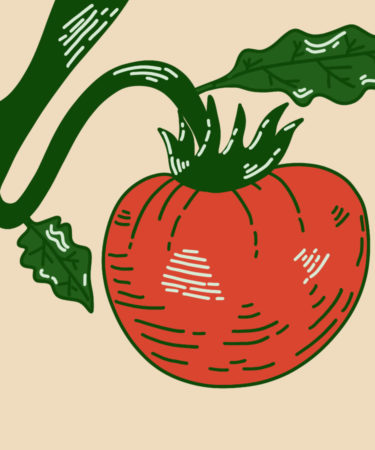No matter how farcical they sound, technical wine-tasting terms serve a valid purpose. A wine that’s described as structured, for example, is one with a good balance of tannins and acidity. Depth is used to refer to the abundance of flavors and aromas, while length denotes how long they stick around for. To the uninitiated, however, these terms mean nothing — and can be exceedingly intimidating.
Certain terms describe something tangible, but somehow still manage to alienate. Case in point: the tomato leaf.
We all know what a tomato looks, smells, and tastes like — and the same thing goes for tree leaves. But how often do you buy tomatoes with leaves attached? Chances are, not very often. Until fairly recently, many people incorrectly thought they were toxic. So why does this term crop up so often in wine descriptions?
“When people use the term tomato leaf, they’re using it as shorthand to describe an earthy aroma which also has a slightly sweet vegetable component,” Keith Beavers, VinePair’s tasting director, explains. Rather than use the term tomato, which could be construed as a sweet note, or plain old leaf, which might make the wine sound too green or vegetal, tomato leaf strikes a nice balance between the two.
Lisa Perrotti-Brown agrees. “You say tomato leaf and I hear pyrazines — that herb or bell pepper-scented compound found in wines produced from less ripe examples of particular grapes,” she writes in a 2017 Wine Advocate article, “How Important Are Tasting Notes?” Most commonly, those grapes are Cabernet Franc, Merlot, and Sangiovese.
Plant biologist and VinePair contributor Jamie Goode notes that tomato leaf is usually a Sauvignon Blanc descriptor, but he uses the term in a much more literal sense. “[I] was watering my tomatoes today, and struck by the remarkable aroma that comes from the leaves when you brush them with your hand,” he wrote in a 2008 blog post.
When it presents itself in wine, Goode explained, the “distinctly green leafy aroma” comes from chemical compounds cis-3-hexen-1-ol and 2-isobutylthiazole, which are present in the grapes.
In the official Wine and Spirits Education Trust (WSET) tasting grid, tomato leaf sits in the cluster of herbaceous primary aromas, or those that come from the grape itself and alcoholic fermentation. It’s listed alongside green bell pepper, grass, and asparagus, all of which are common tasting descriptors for Cabernet Franc and Sauvignon Blanc.
None of these vegetables are present in the wine or grapes, of course. That’s what makes wine so amazing, Beavers says. ”It gives us all these things that we recognize, but that aren’t there in the vineyard.”
